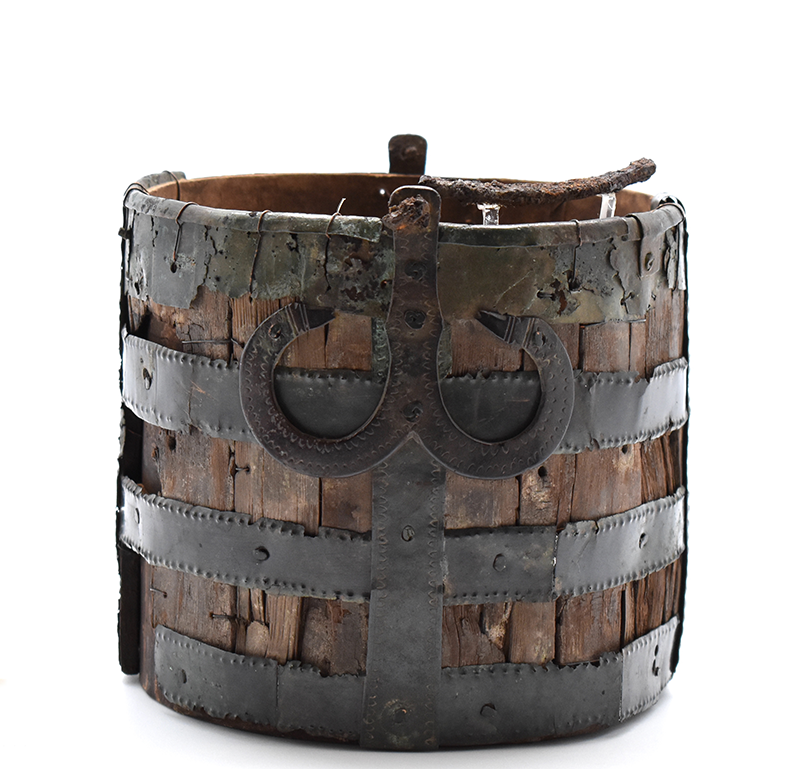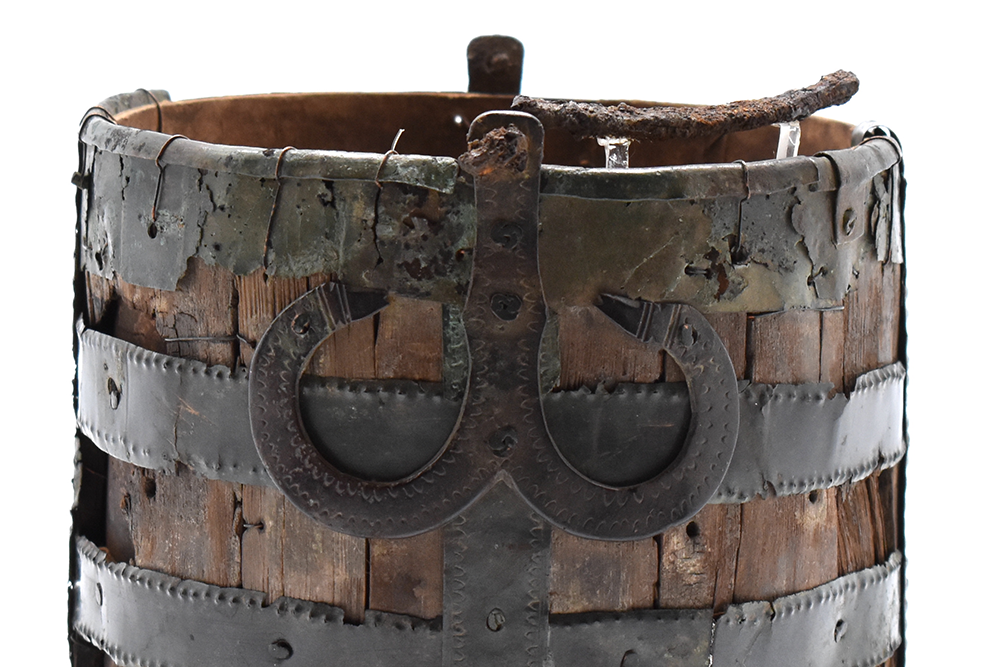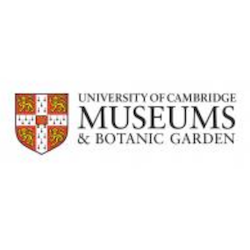
Bucket
Early Medieval
Cambridge, England
Z 21435
"My imagination is still rattling around inside this Early Medieval bucket. Why was it buried beside someone 1,500 years ago? I love objects like these because they hold on to people’s stories; how they’ve made sense of the world. It reminds me that there are so many ways to be."
- Lily Stancliffe
There's a Hole in my Bucket
Listen to an audio version of this text:
As far as archaeologists of the past were concerned, the kings of Early Medieval England wore hooped crowns adorned with animal heads and beaten into shimmering splendour. However, by the mid-19th century, wayward crowns were beginning to show up; not in the burial mounds of muscular, middle-aged men, but in the modestly furnished graves of women and children. It turns out that the crowns were not meant for human heads but belonged instead to beautifully wrought buckets buried beside them.
This particular example occupies a special place in my imagination as its very bucket-ness calls for speculation about its contents, its purpose. This bucket absolutely and unequivocally (to use words an archaeologist almost never gets to) means something. The person buried with it was accompanied by gloriously practical goods; a pot, a knife and a pair of tweezers looped onto a ring with an ear-scoop. Superficially, we might consider a medium-sized, apparently watertight bucket to belong to the same category; we would also, potentially, be quite wrong.
The burial practices of Early medieval people were highly diverse, so it's not insignificant that a number of people from the fifth century all the way through to the ninth were buried with buckets. It is usually assumed (on account of the vessels' specialness) that they were used to contain offerings of alcohol or food; but most of these buckets are constructed of toxic yew-wood. Another feature which might impede the use of an Early Medieval burial bucket to contain pretty much anything, is that not one single bucket has ever been found with an intact base. Perhaps these buckets were only suitable for use by the already-dead? Or maybe they earned their place at the side of the deceased by being somehow un-made?
Explore these objects further:
https://collections.maa.cam.ac.uk/objects/415478
Explore the full collections database:
https://collections.maa.cam.ac.uk
Lily Stancliffe - Collections Assistant (Stores Move)
Lily Stancliffe (BA, MA) has a background in the material culture, language and literature of Early Medieval Europe with a special interest in the relationship between objects and identity. In her current role as collections assistant on the Stores Move project, she is documenting and packing MAA’s extensive off-site collections for transfer to the new Centre for Material Culture.
Lily has previously worked with the education and outreach team at MAA and as Evaluation Coordinator for the Feast and Fast exhibition at the Fitzwilliam museum; she is passionate about climate action and the role that cultural institutions will come to play in a rapidly changing world.








